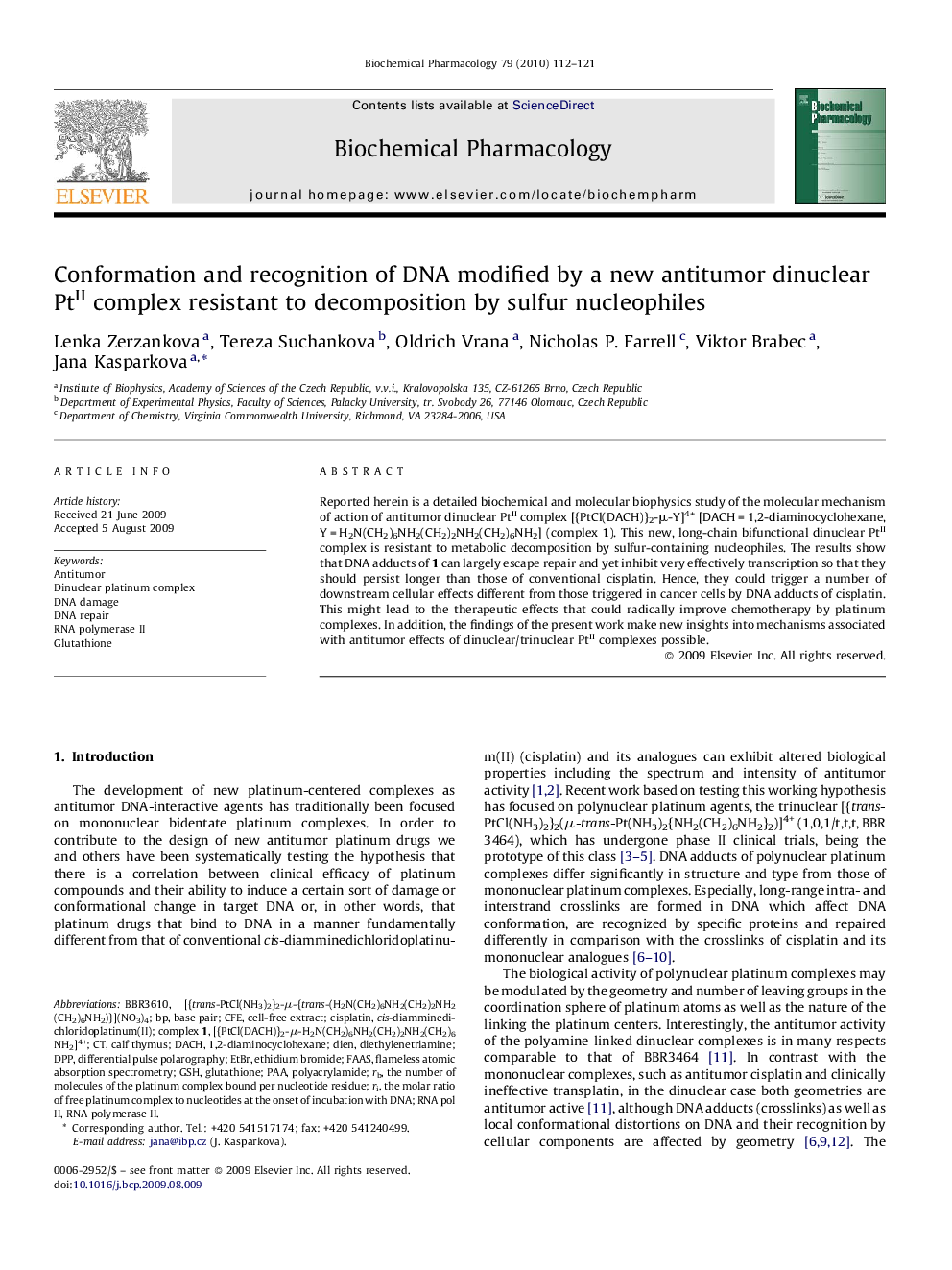| Article ID | Journal | Published Year | Pages | File Type |
|---|---|---|---|---|
| 2513807 | Biochemical Pharmacology | 2010 | 10 Pages |
Reported herein is a detailed biochemical and molecular biophysics study of the molecular mechanism of action of antitumor dinuclear PtII complex [{PtCl(DACH)}2-μ-Y]4+ [DACH = 1,2-diaminocyclohexane, Y = H2N(CH2)6NH2(CH2)2NH2(CH2)6NH2] (complex 1). This new, long-chain bifunctional dinuclear PtII complex is resistant to metabolic decomposition by sulfur-containing nucleophiles. The results show that DNA adducts of 1 can largely escape repair and yet inhibit very effectively transcription so that they should persist longer than those of conventional cisplatin. Hence, they could trigger a number of downstream cellular effects different from those triggered in cancer cells by DNA adducts of cisplatin. This might lead to the therapeutic effects that could radically improve chemotherapy by platinum complexes. In addition, the findings of the present work make new insights into mechanisms associated with antitumor effects of dinuclear/trinuclear PtII complexes possible.
Graphical abstractA detailed study of the molecular mechanism of action of a new dinuclear platinum complex is reported. DNA adducts of this complex can largely escape repair and yet inhibit very effectively transcription.Figure optionsDownload full-size imageDownload as PowerPoint slide
